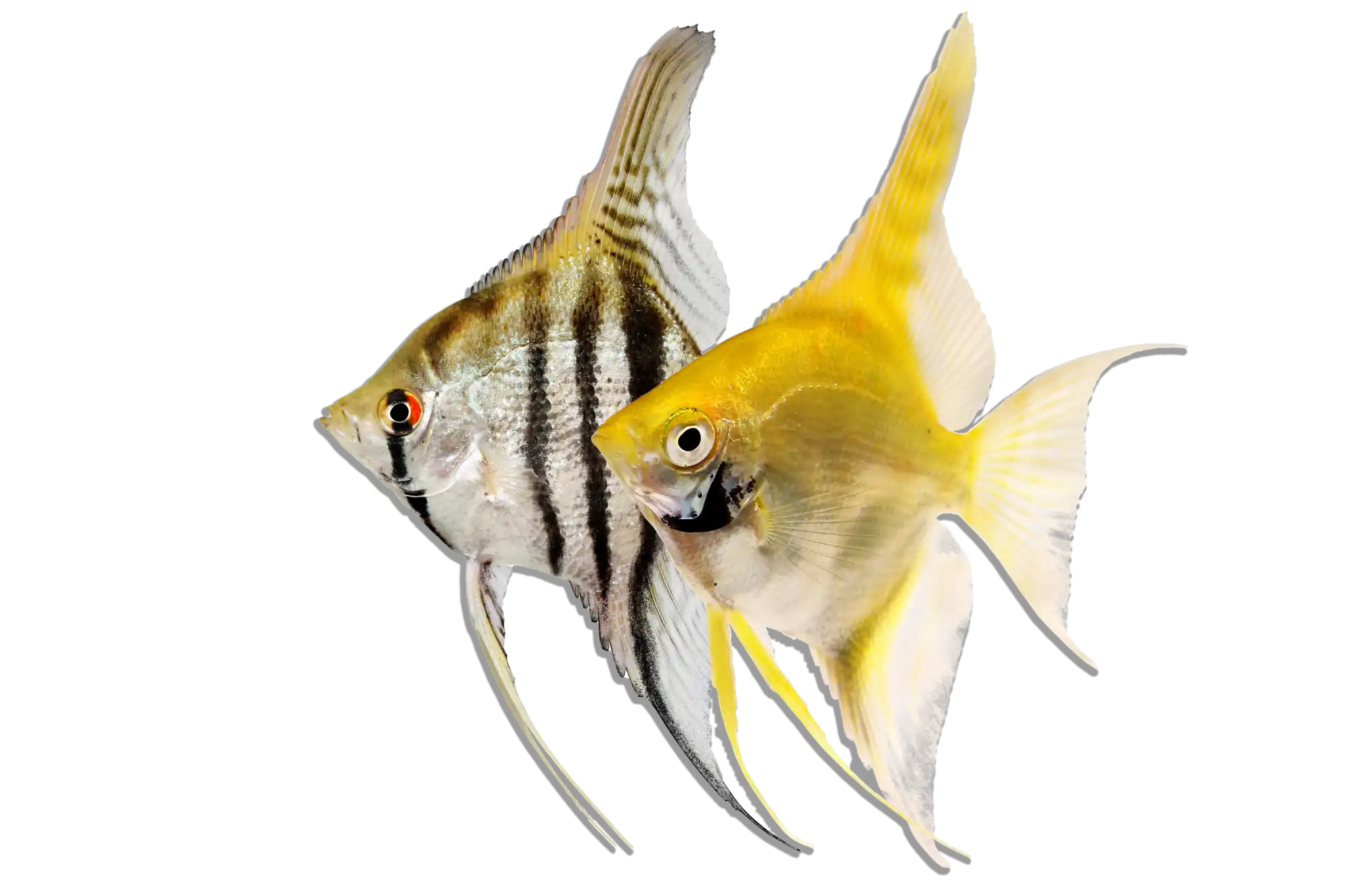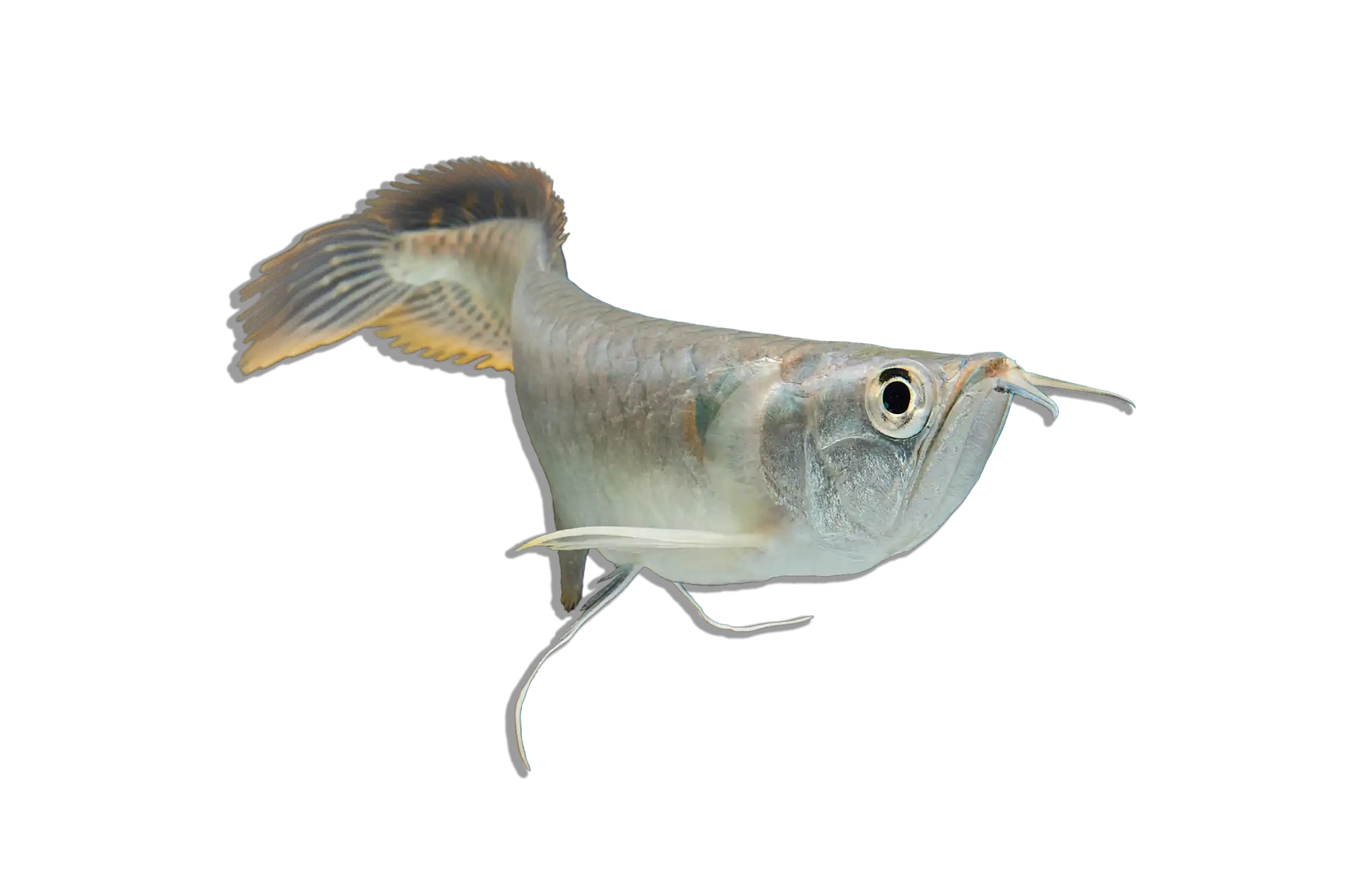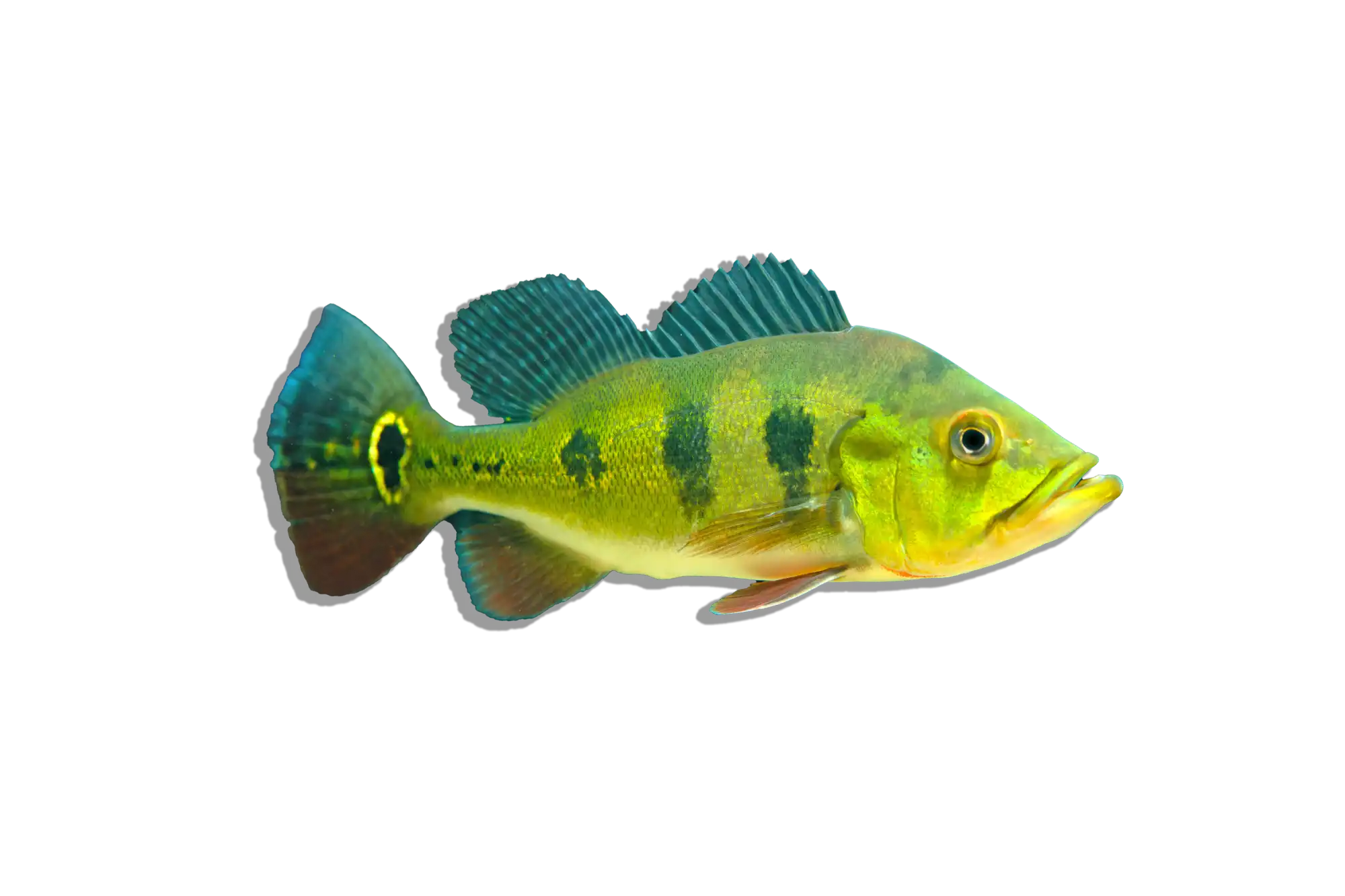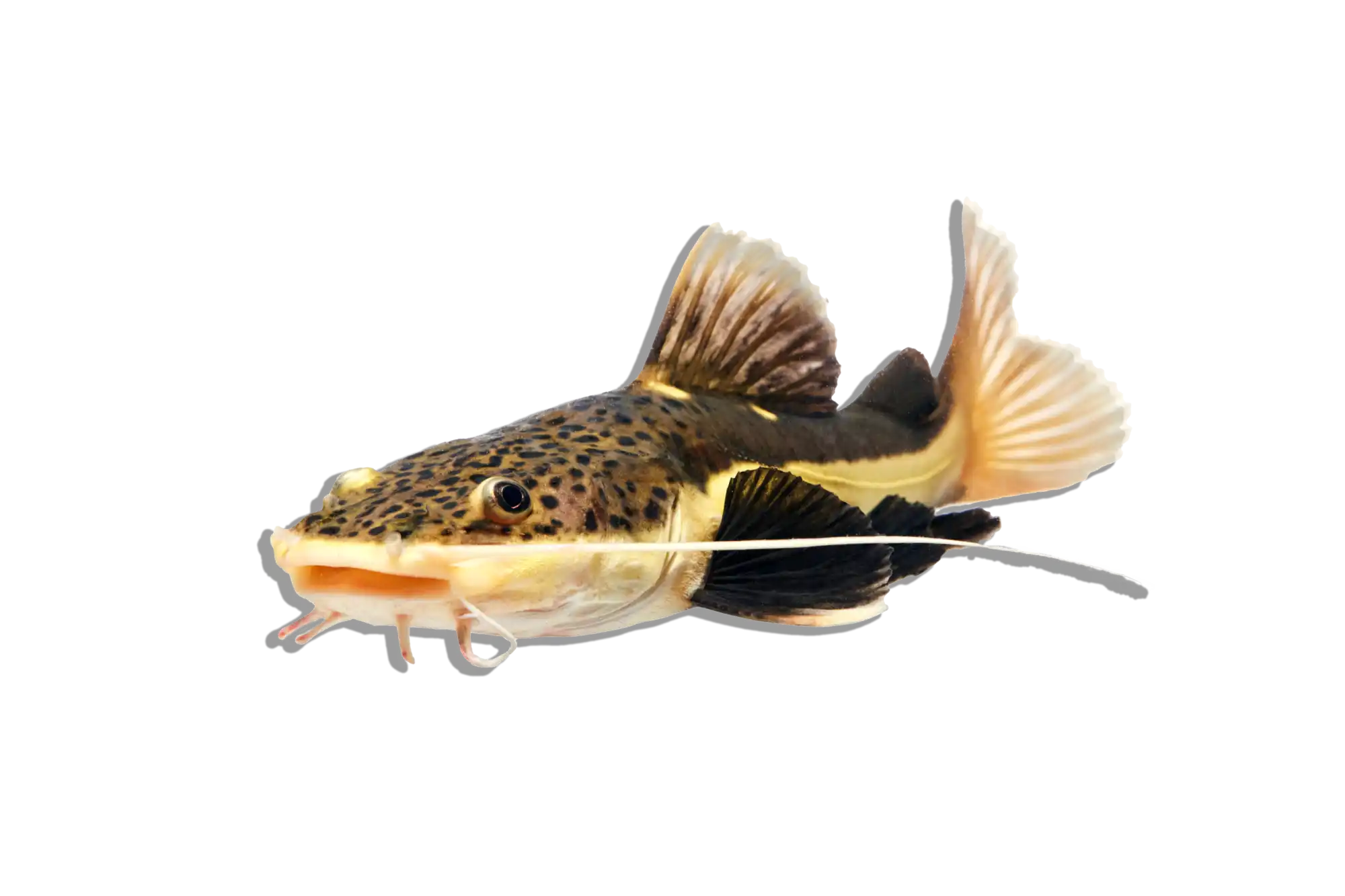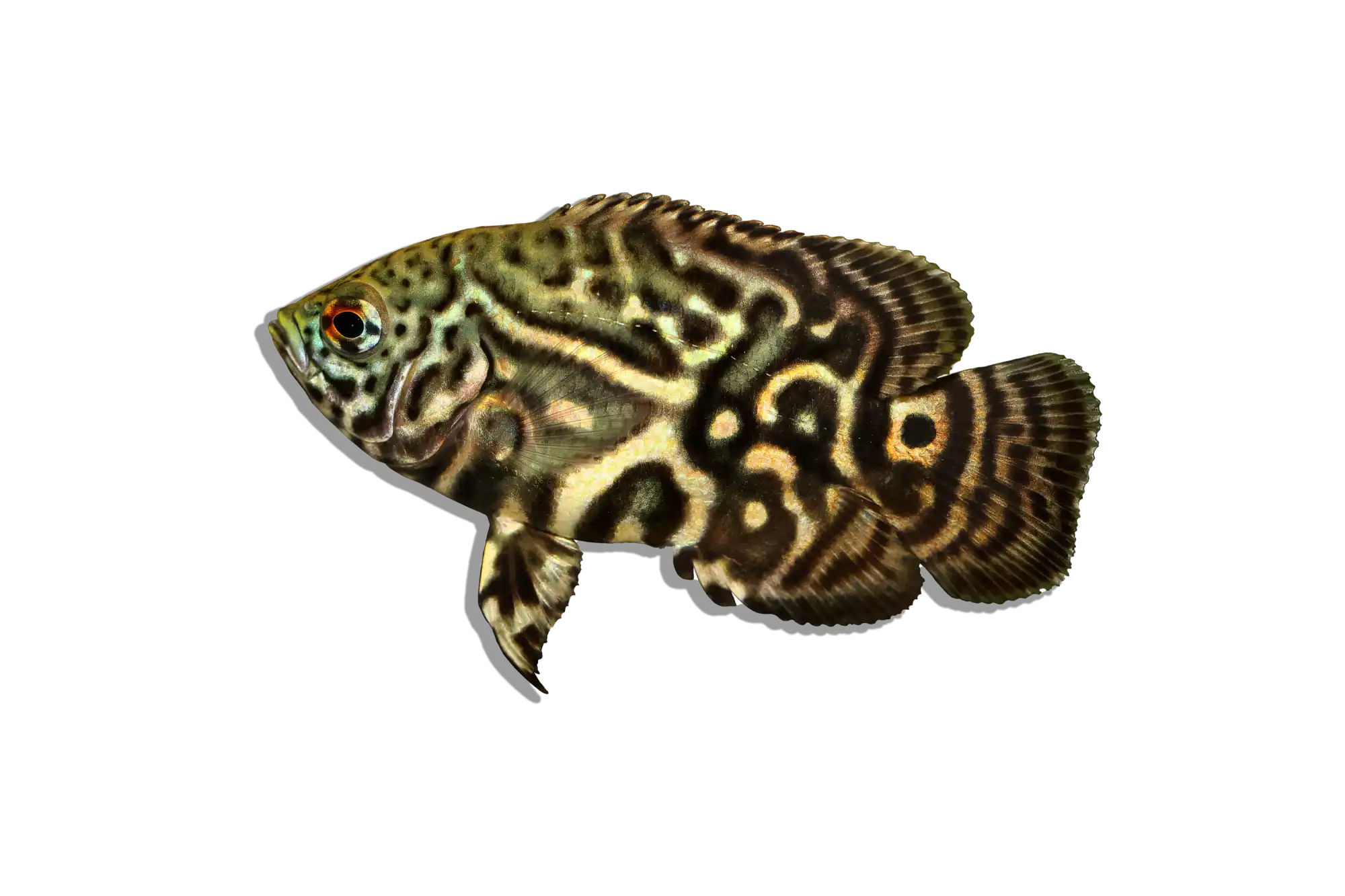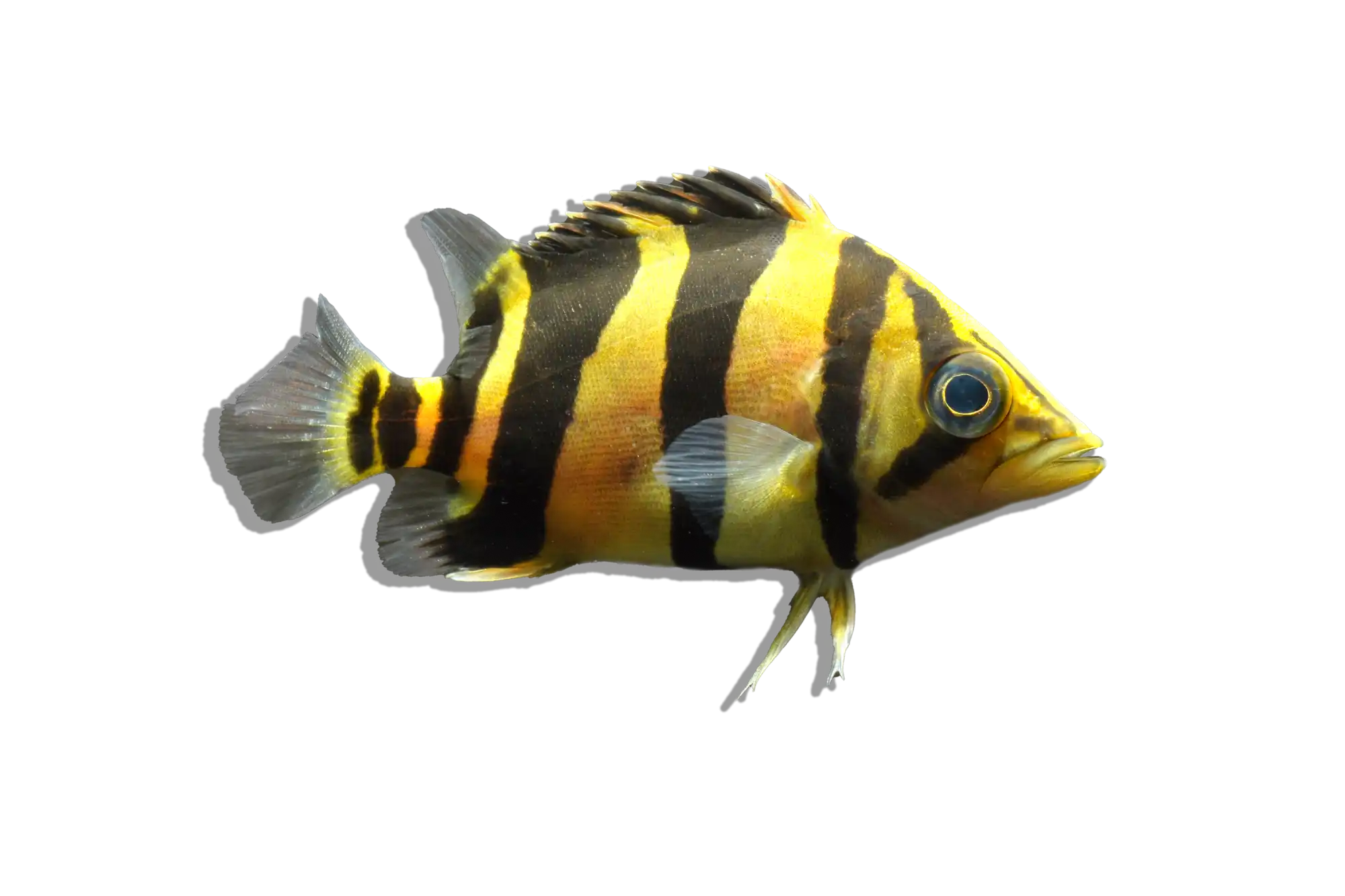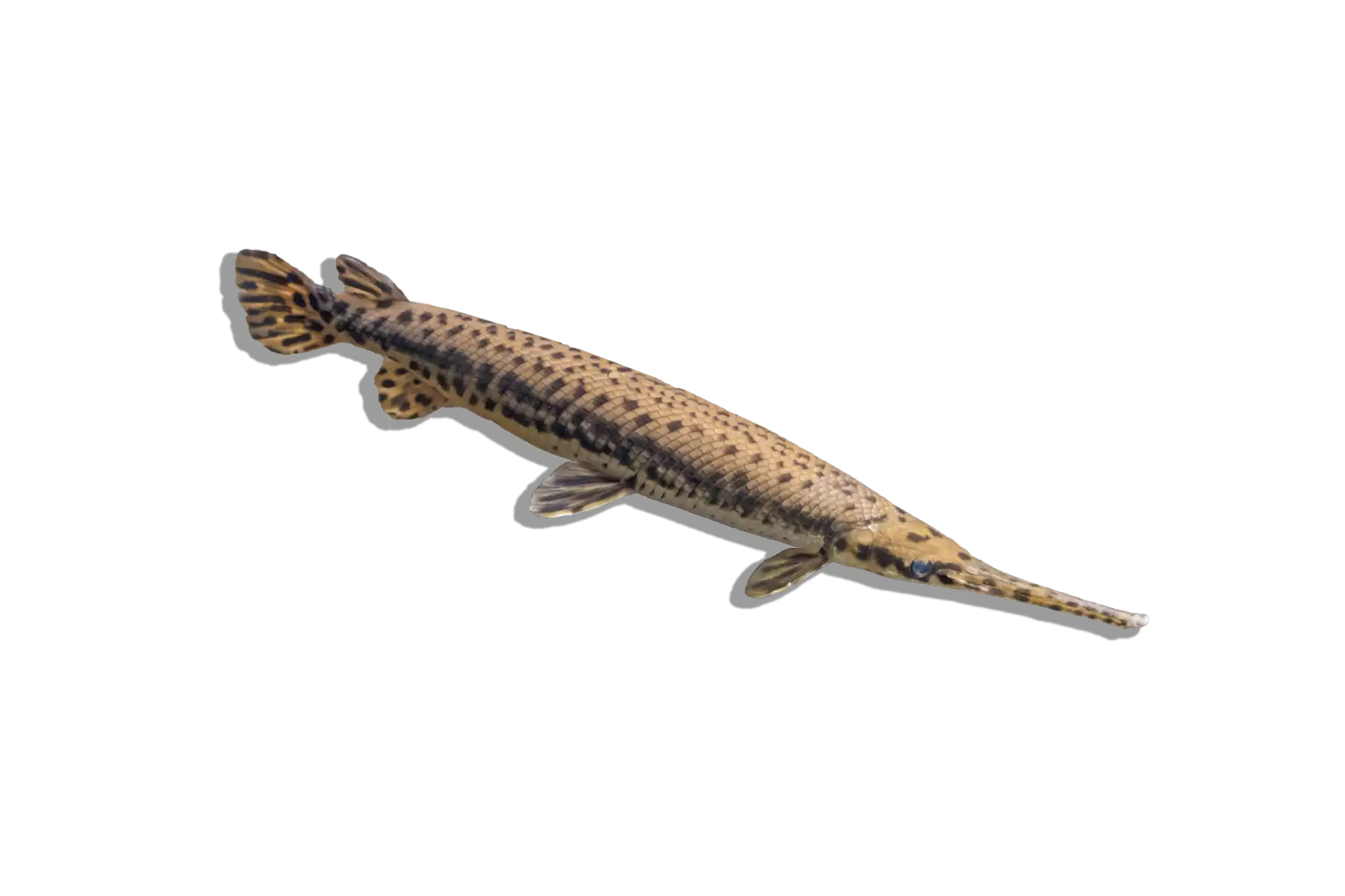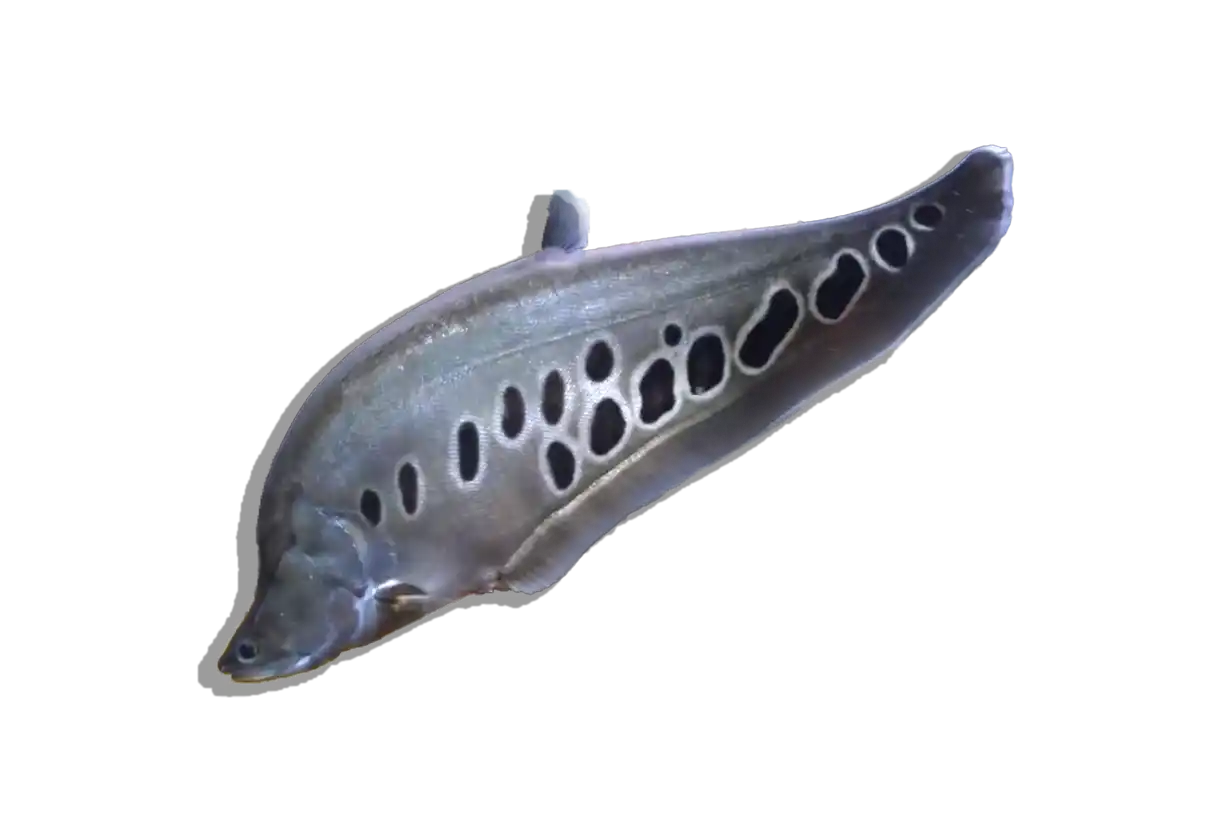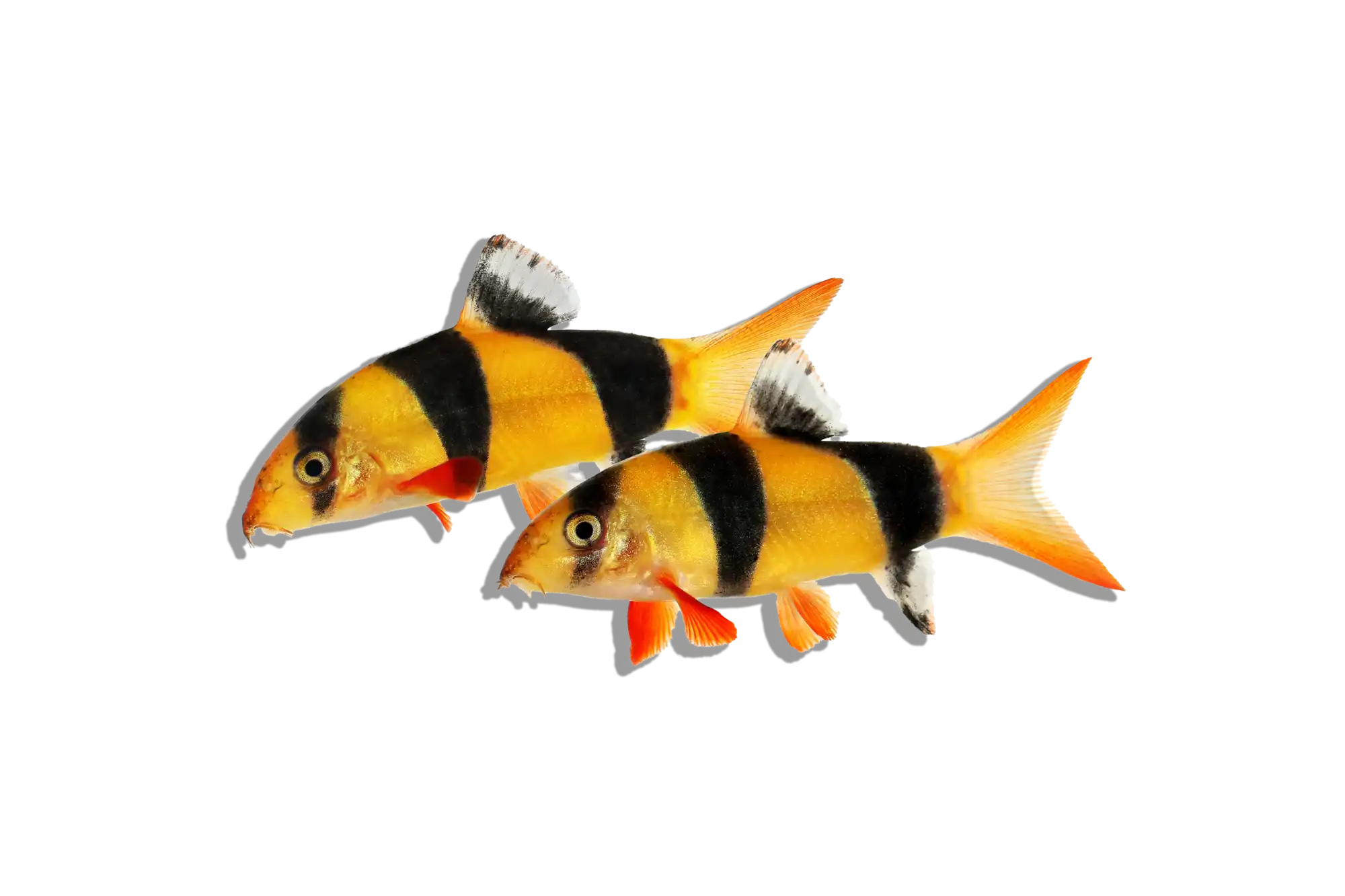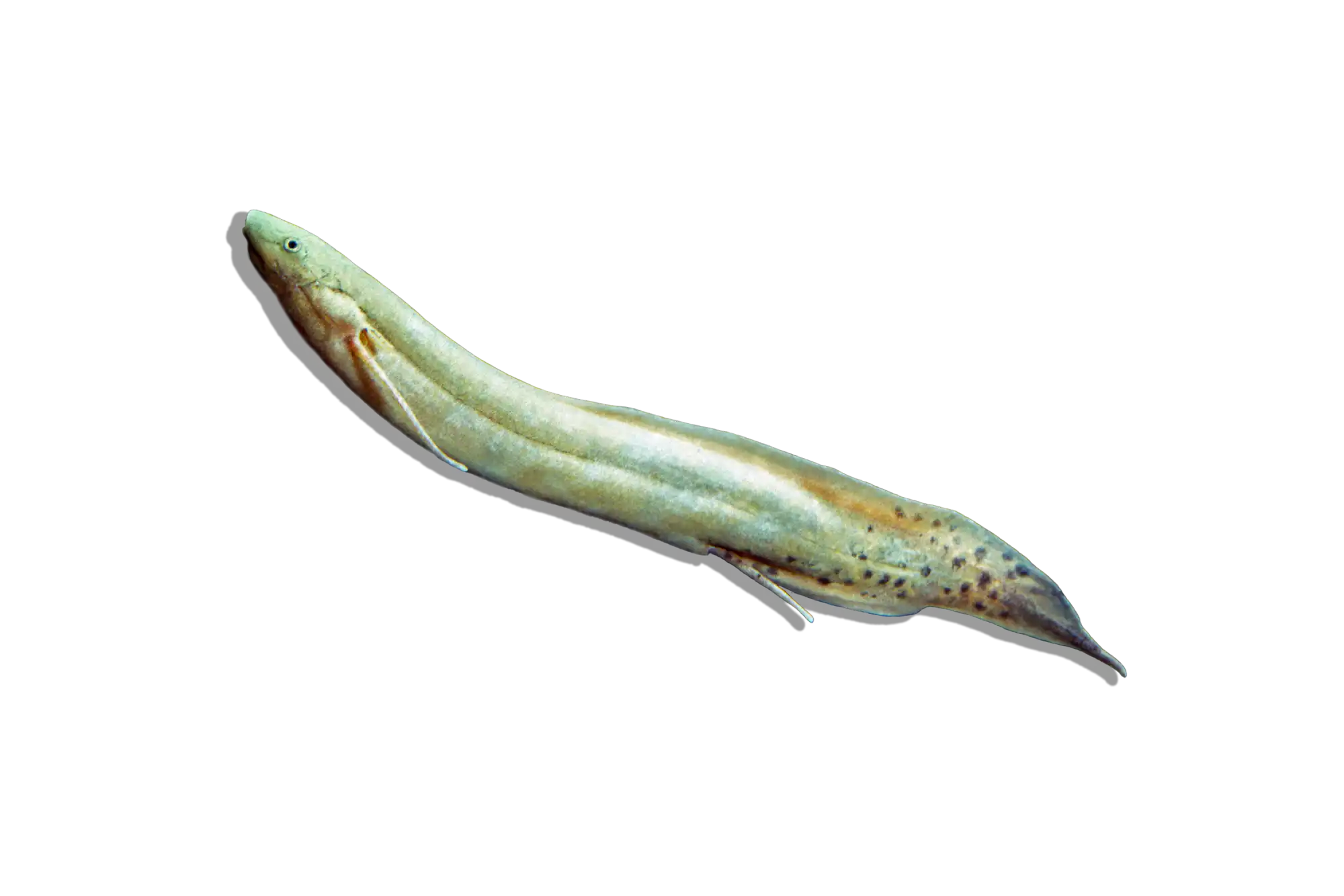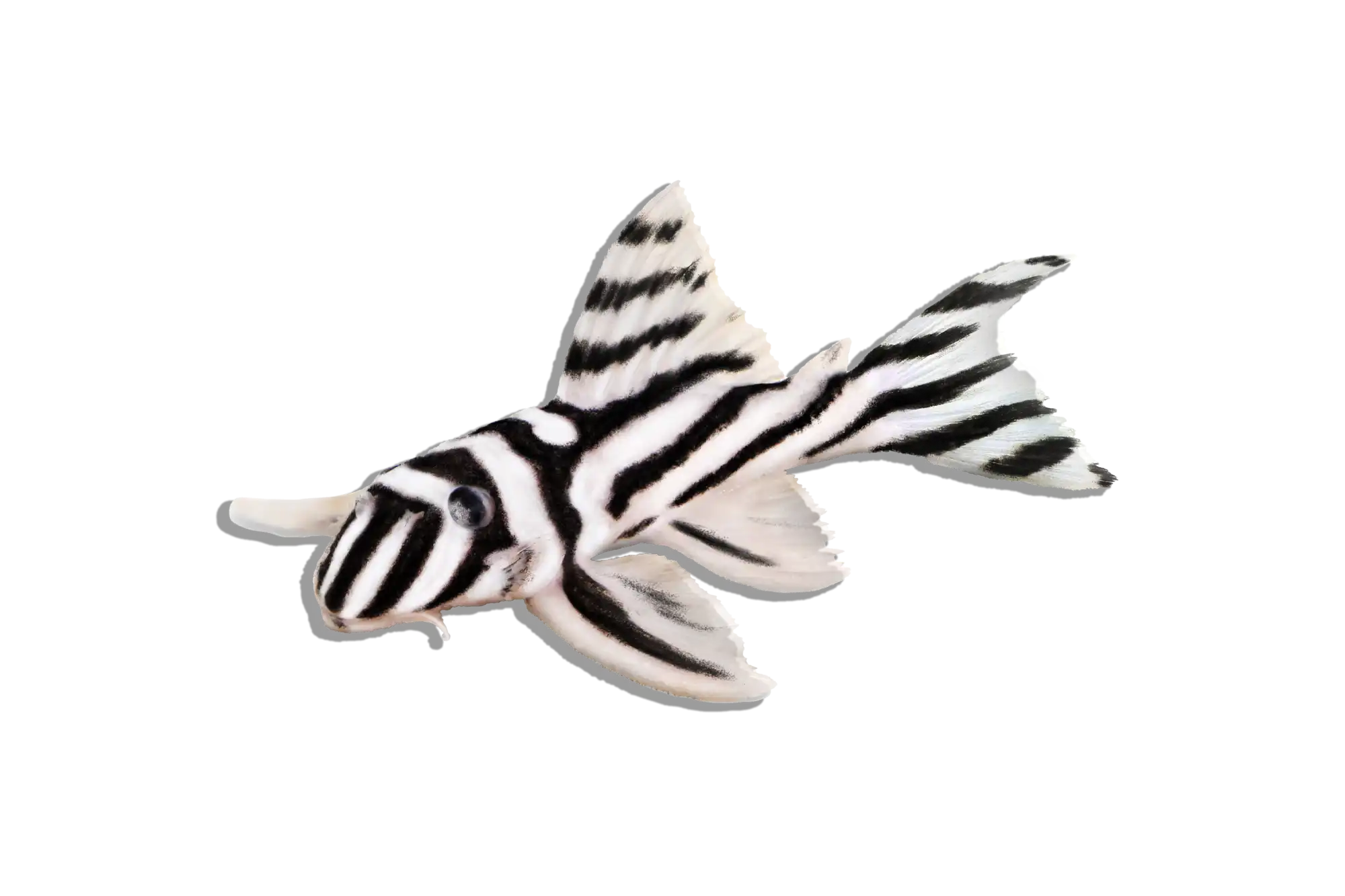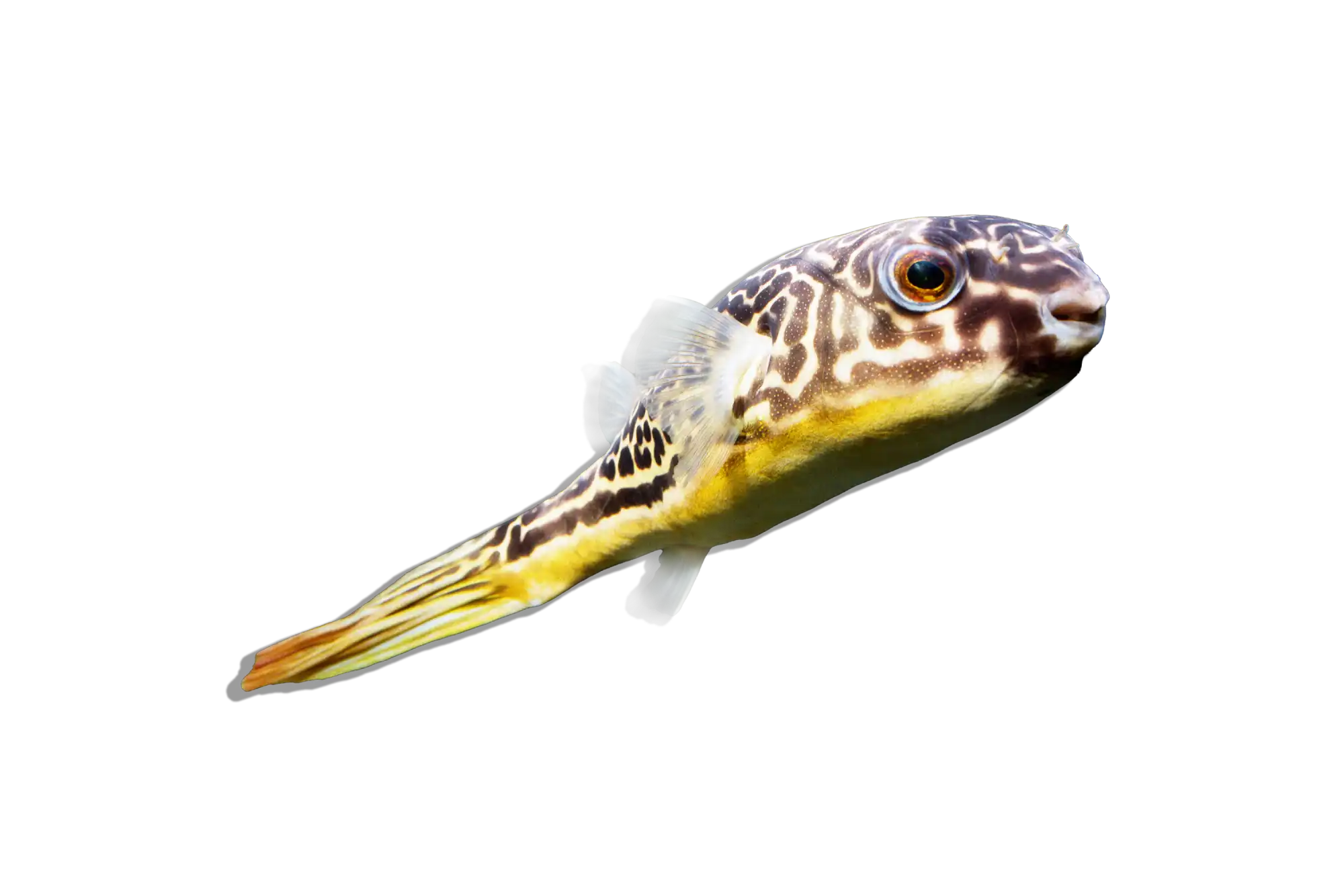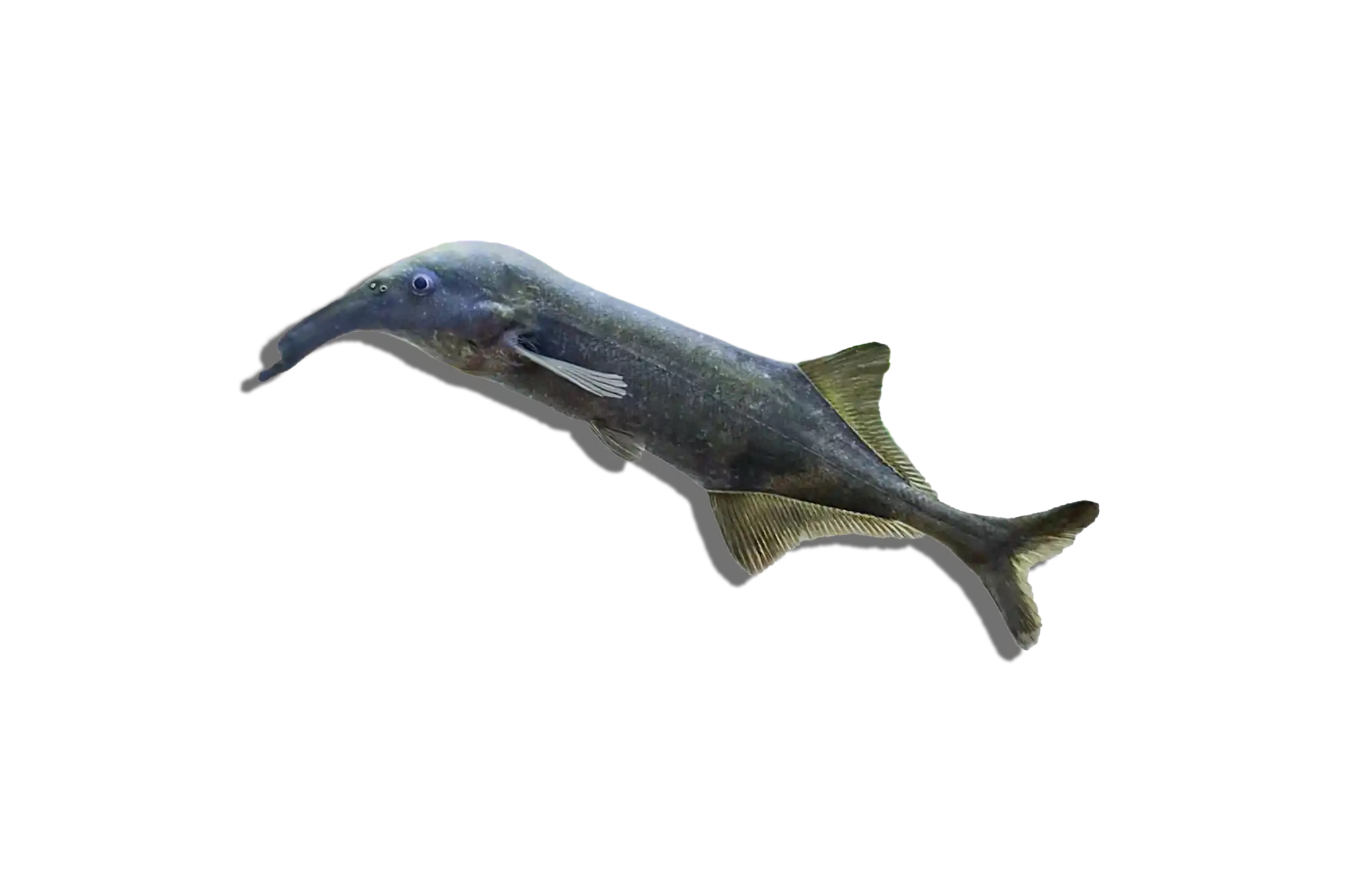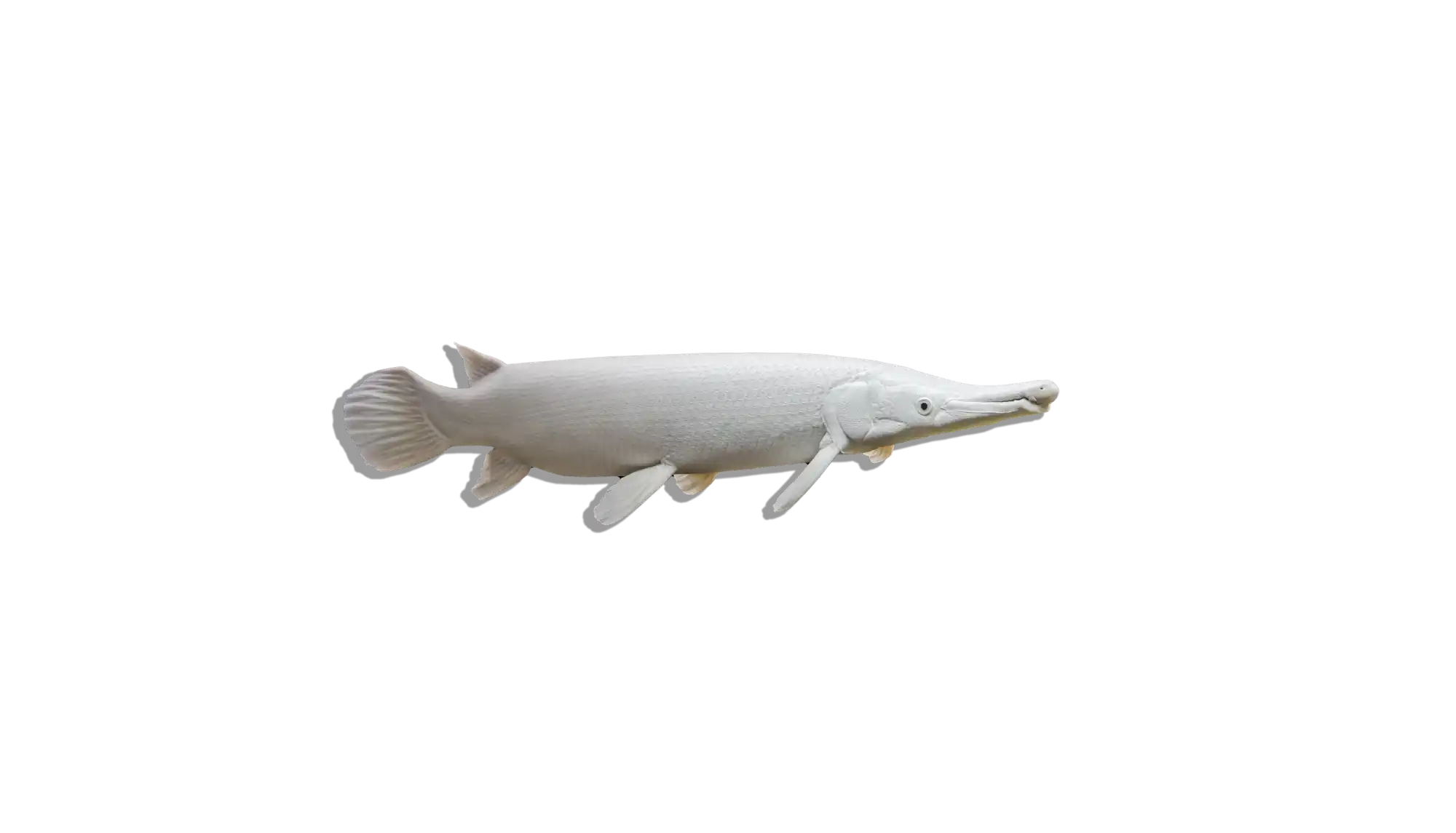Description
Common Name: Jaguar Catfish
Scientific Name: Liosomadoras oncinus
Other Names: Oncinus Catfish, Jaguar Cat
The Jaguar Catfish is a strikingly patterned nocturnal species, named for its jaguar-like spotted coloration. Its body is dark brown or black, adorned with irregular golden-yellow spots and blotches, making it a visually striking addition to large aquariums. Unlike many other catfish, it has a more compact body shape with a slightly arched back and a broad head. This species is secretive and prefers to stay hidden during the day, becoming more active at night.
Habitat and Distribution:
Native to the Amazon River Basin in Brazil, Colombia, and Peru, Liosomadoras oncinus is typically found in slow-moving blackwater streams and tributaries with dense vegetation and submerged driftwood. These environments are rich in tannins from decaying plant matter, creating soft, acidic water conditions with limited visibility. The species prefers shaded areas and spends most of its time hiding under submerged logs or within rocky crevices.
Size and Lifespan:
Jaguar Catfish can grow up to 8-10 inches (20-25 cm) in length. With proper care, they can live for 10-15 years.
Diet and Behavior:
This species is a nocturnal omnivore, feeding on small fish, insect larvae, crustaceans, and organic debris in the wild. In captivity, they should be provided with high-quality sinking pellets, frozen or live foods such as bloodworms, blackworms, chopped raw tilapia, and occasional vegetable matter like spirulina-based foods. They are generally peaceful but can be territorial with other bottom dwellers. Due to their shy nature, they require hiding places such as caves and driftwood to feel secure.
Breeding and Reproduction:
Breeding Liosomadoras oncinus in captivity is extremely rare and poorly documented. In the wild, they likely spawn in secluded, protected areas, and their breeding behaviors remain largely unknown. Captive breeding attempts would require a carefully structured environment with stable water conditions and naturalistic hiding spots.
Aquarium Care and Tank Requirements:
A minimum of 75 gallons is required for an adult, with a larger tank (100+ gallons) preferred for groups or community setups. Their ideal tank setup includes a soft sand or fine gravel substrate, plenty of driftwood, caves, and PVC pipes for hiding, strong filtration to maintain water quality, moderate to low water flow, and dim lighting or floating plants to provide shade.
Ideal Tank Mates:
The Jaguar Catfish is peaceful and does well with similarly sized, non-aggressive tank mates. Suitable companions include Severums, Geophagus Cichlids, Angelfish, Silver Dollars, Plecos, and Corydoras. Avoid highly aggressive species that may outcompete them for food or invade their hiding spaces.
Difficulty Level:
Intermediate to Advanced. They require stable water conditions, a well-structured tank with ample hiding spaces, and a specialized diet to thrive.
Water Parameters:
- Temperature: 75-82°F (24-28°C)
- pH: 5.5-7.2
- General Hardness (GH): 3-12 dGH
- Carbonate Hardness (KH): 2-8 dKH
- Ammonia: 0 ppm
- Nitrite: 0 ppm
- Nitrate: <20 ppm (regular water changes required)
Additional Information:
- They are most active at night and will rarely be seen during the day unless food is introduced.
- Due to their nocturnal nature, using dim lighting or moonlights can encourage more natural behaviors.
- They are highly sensitive to poor water quality, so regular water changes and efficient filtration are essential.
The Jaguar Catfish is a stunning and unique species best suited for experienced aquarists looking to add a rare and secretive catfish to their collection. With the right care, they can be a long-lived and rewarding addition to a large, well-maintained aquarium.

